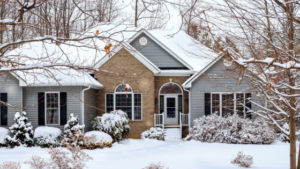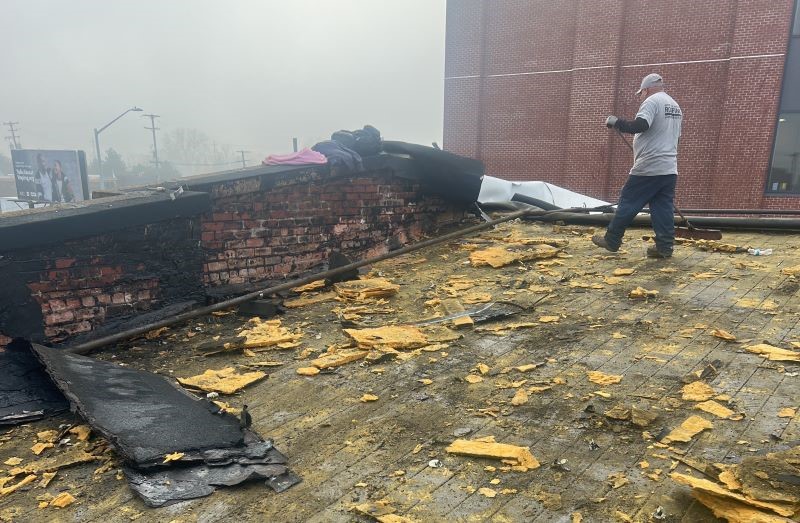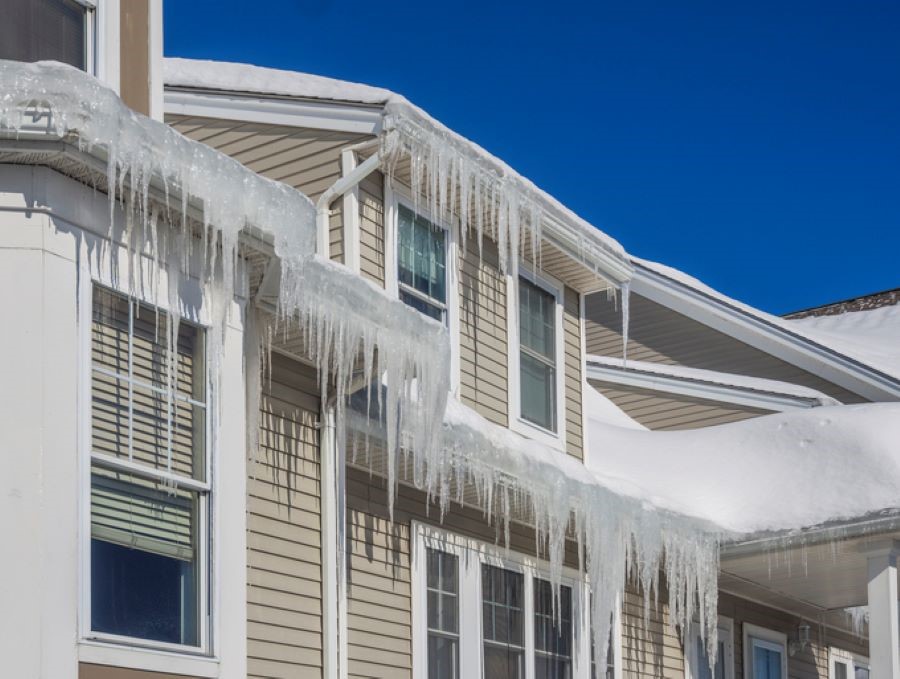
The best remedy to just about any potential roof problem is preventive maintenance, and that’s perhaps best exemplified by the potential for winter roof damage. In most cases, winter weather won’t cause new damage to your roof, however it can exacerbate existing—or even unknown—problems.
Especially in West Michigan, where we can experience large snowfall and well-below-freezing temperatures, then just as quickly watch everything thaw, it’s important to make sure your roof is as healthy as it can be as winter approaches, and to do everything you can to maintain the quality of your roof throughout the winter.
Types of Roof Damage During the Winter
With snow, sleet, and rain, combined with harsh winds and fluctuating temperatures, your roof is going to take a beating in the winter months.
Snow Damage
Snow can be detrimental for a number of reasons, but as noted above, snow is probably only dangerous if your roof already has issues. If your roof is old, heavy snow could lead to structural damage, or even a complete cave-in. If you have damaged or missing shingles, or poor sealing around your chimney, flashing, or skylights, melting snow can seep through and reveal potentially devastating leaks.
To prevent snow damage to your roof after a particularly heavy snow, you may want to clear the snow using a roof rake. Make sure you have secure footing while doing so. If you need to climb a ladder or even get on the roof, you should consider hiring a professional to do it for you.
Wind Damage
During particularly harsh wind storms, everything is at risk for being blown around, ripped up, or tattered. While it’s possible wind alone can tear a few shingles from your roof, the likelihood of that happening is lower if your roof is younger and in good shape. Still, even a brand new roof may not be able to withstand a tree limb that is blown onto the roof, potentially ripping apart your shingles. If that happens, it’s a good idea to take care of it as soon as possible.
Ice Dams and Icicles
Ice dams can result in one of the worst types of roof damage over the winter. You can read all about these hazards and how to address them in our previous blog post: How to Prevent and Remove Ice Dams. If you’re seeing any of these on your home this winter, don’t ignore them! It’s important to note ice dams (and large icicles) are usually caused by poor insulation or ventilation. So, while there are solutions to get rid of the immediate problem, you owe it to yourself and your home to look into a long-term solution.
Preventive Maintenance
What can you do to give yourself peace of mind over the winter? Here are a few essentials:
- Inspect your roof and look for any potential problems, such as loose shingles, deteriorating granules, potential cracks, blocked vents, etc. If you’re unsure, contact us and we’ll be glad to give you a full roof inspection.
- Fix any issues found during the inspection.
- Clean your gutters. When free of leaves and other detritus, your gutters will work as designed and help drain melting snow properly.
A typical asphalt roof’s lifespan is 15-20 years. If your roof is in that range, it’s even more important to inspect it and make sure it’s ready for the winter.
While winter weather can be harsh, it usually won’t create new problems; however, it also won’t hesitate to call attention to existing problems. With diligent preventive maintenance, you can avoid winter roof damage for another year.
Subscribe to West Michigan Roofing's Blog





Comments